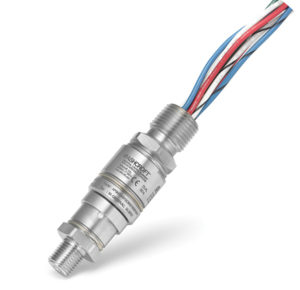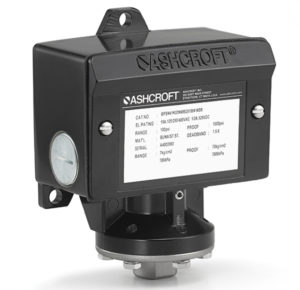

VP-Series Pneumatic Pressure Switch
VP-Series Pneumatic Pressure Switch
The Ashcroft® VP pneumatic pressure switch was designed for use with harsh applications where uncompromising protection is required.
Features & Properties
Use & Application
Downloads
Features & Properties
Use & Application
The VP pneumatic pressure switch is ideal where accurate and reliable pressure measurement are essential:
Downloads
Data Sheets
Installation + Maintenance
Drawings + Models
The Ashcroft® VP pneumatic pressure switch is designed for use on tough applications where no electric power is available and uncompromising protection is required. The features of this switch along with its proven technology provide a stable, long-lasting product. Ideal for pressure control, safety shutdown or alarm operations.
Key Features
Precise repeatability of setpoint
Adjustable setpoints from 15% ... 100% of range
Wide variety of pressure connection thread options
Selection of wetted materials
Markets & Applications
Water and Wastewater
Chemical and Petrochemical
- Specifications
- Downloads
Switch Style
5/2 way pneumatic valve
Process Connection Style
Threaded
Accuracy
1% of span
Ranges
Vacuum
1 ... 210 bar / 15 ... 3000 psi
Compound
25 ... 375 mbar / 10 ... 150 in. H2O
Wetted Parts Material
Buna-N®
Teflon®
Viton®
Stainless steel 316L (1.4404)
Monel
Pressure Type
Gauge pressure
Ingress Protection
IP65
Case or Body Material
Epoxy coated aluminium
Process Connection Location
Lower
Setpoint
Single setpoint - Field adjustable
Deadband Fixed
Mounting
Stem
Surface
2" pipe mounting
Data Sheets
Installation + Maintenance
Drawings + Models
- Category: Pressure Switches
We’re glad to be there for you personally.
Siamo personalmente a vostra disposizione!
Nous sommes personnellement là pour vous.
Şahsen yanınızda olmaktan mutluluk duyuyoruz.
We zijn blij dat we er persoonlijk voor u kunnen zijn.
Wir sind persönlich für Sie da!
Siamo personalmente a vostra disposizione!
Nous sommes personnellement là pour vous!
Select your Region!













